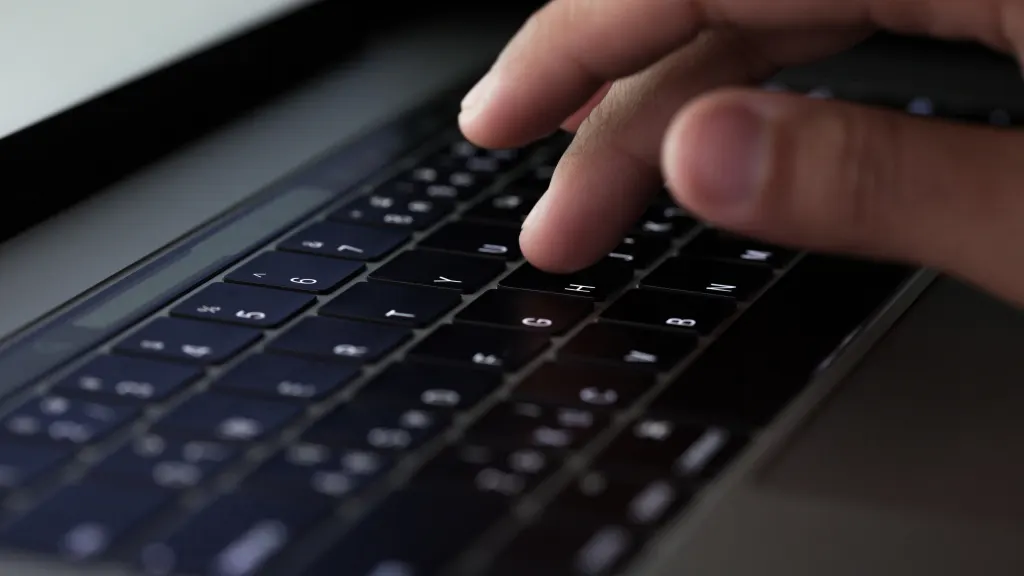How to fix a MacBook Pro Touch Bar that’s not working

If your MacBook® has a Touch Bar, you’re probably used to how easy it makes using gestures to access Siri®, open apps, and adjust your settings with a tap—or swipe—of a finger. So when it suddenly stops working, it can be put a damper on your experience.
At uBreakiFix® by Asurion, we’ve got the tech know-how to keep all of your tech working as it should. From connecting your MacBook to a TV to fixing broken computer keys—we’ve got you covered. Here’s what to do when your MacBook Pro® Touch Bar is glitching.
Why is my MacBook Touch Bar not working?
Several factors can contribute to Touch Bar issues, from software glitches to system conflicts. Here are some of the common ones:
- Glitches in applications: Sometimes, a bug within an app can affect the Touch Bar's functionality.
- Outdated macOS version: Running an older version of macOS might lead to compatibility issues with the Touch Bar.
- Resource-intensive processes: Certain processes consuming high system resources can impact the Touch Bar's performance.
- Misleading settings: Specific settings may give the appearance that the Touch Bar is not working when it actually is.

You can’t work when your computer doesn’t want to
Get it repaired fast at one of our stores. Just stop in or make an appointment⎯we'll handle the rest.
How to fix a MacBook Touch Bar
There are a few ways you can troubleshoot your Mac Touch Bar. Don’t worry—we’ll walk you through them all.
Force quit troublesome applications
Sometimes, specific apps can cause the Touch Bar to malfunction. Use Spotlight (Cmd + Space) to search and open Activity Monitor. Look for apps with high CPU usage or known issues with the Touch Bar. Select the offending app in Activity Monitor and click the X button to force quit.
Restart your Mac
A simple restart can often resolve temporary glitches affecting the Touch Bar.
- Click on the Apple menu.
- Select Restart.
Check your keyboard settings
Your keyboard’s settings could be sabotaging your Touch Bar. Go to System Settings > Keyboard. Check the Touch Bar section. Make sure that App Settings and Show Control Strip are selected.
Update macOS
Ensuring your MacBook Pro is running the latest version of macOS can fix many Touch Bar issues.
Click on the Apple menu > System Settings > General > Software Update or Apple menu > System Preferences > Software Update, depending on your software version. Then, install any available updates.
Clear the Touch Bar cache files
Clearing cache files specific to the Touch Bar can resolve certain issues. Cache files are non-essential files that your Mac sets aside to help you navigate programs a little easier. Clearing your cache will not delete your data. Here’s how to do it:
- Open Finder.
- Click Go > Go to Folder.
- Type ‘~/Library/Caches/’ and press Enter. Then, delete Touch Bar-related cache files.
Reset the Touch Bar
Resetting the Touch Bar can often fix unresponsiveness or glitches. Resetting that can solve the problem. There are two ways to reset it: the Activity Monitor or Terminal.
To reset the Touch Bar using Activity Monitor:
- Go to Applications > Utilities.
- Double-click Activity Monitor.
- Use the search box to search for ‘TouchBarServer’ and click the X button to force close it. Then, close the Activity Monitor.
To reset the Touch Bar using Terminal:
You can also reset the Control Strip (part of the Touch Bar) using Terminal commands.
- Go to Applications > Utilities.
- Open Terminal. Type ‘sudo pkill TouchBarServer’, and enter your password when prompted. Then, close the Terminal.
Reset the SMC and NVRAM
Resetting the System Management Controller (SMC) and Non-Volatile Random-Access Memory (NVRAM) can resolve deeper system issues.
How to reset SMC:
- Press and hold Shift + Control + Option and the Power button.
- Hold for at least 10 seconds, and then release. Then press the Power button again to start your MacBook.
How to reset the PRAM/NVRAM:
- Open the Apple menu > Shut Down.
- Upon startup, hold Cmd + Option + P + R for about 20 seconds.
If you've tried these steps and still need a little help, we're right around the corner. Schedule a repair at the nearest uBreakiFix® by Asurion store and our certified experts can get your device back up and running as soon as the same day.
The Asurion® trademarks and logos are the property of Asurion, LLC. All rights reserved. All other trademarks are the property of their respective owners. Asurion is not affiliated with, sponsored by, or endorsed by any of the respective owners of the other trademarks appearing herein.